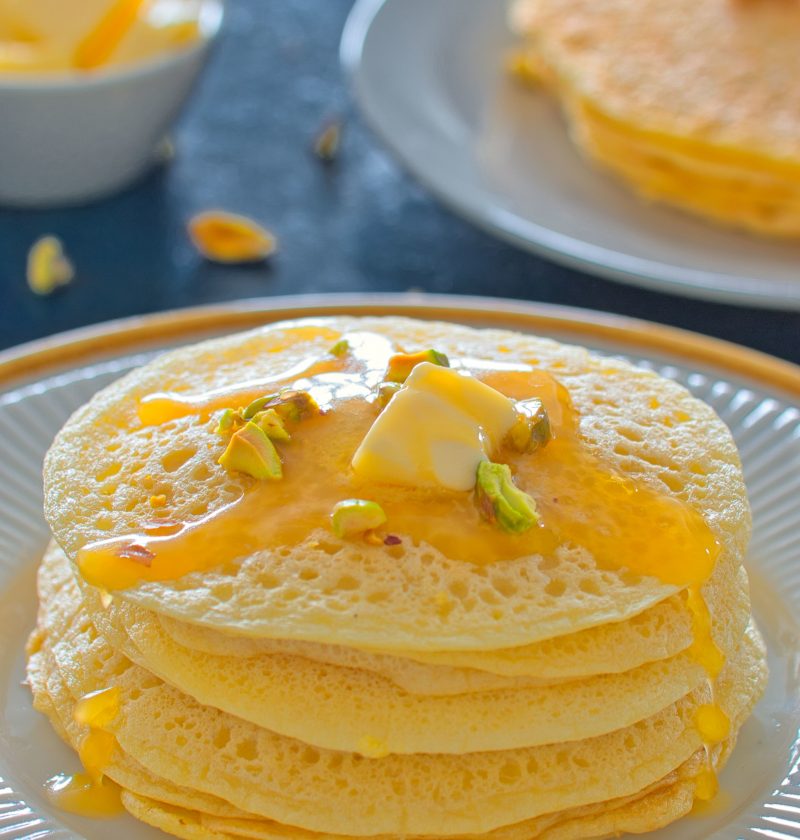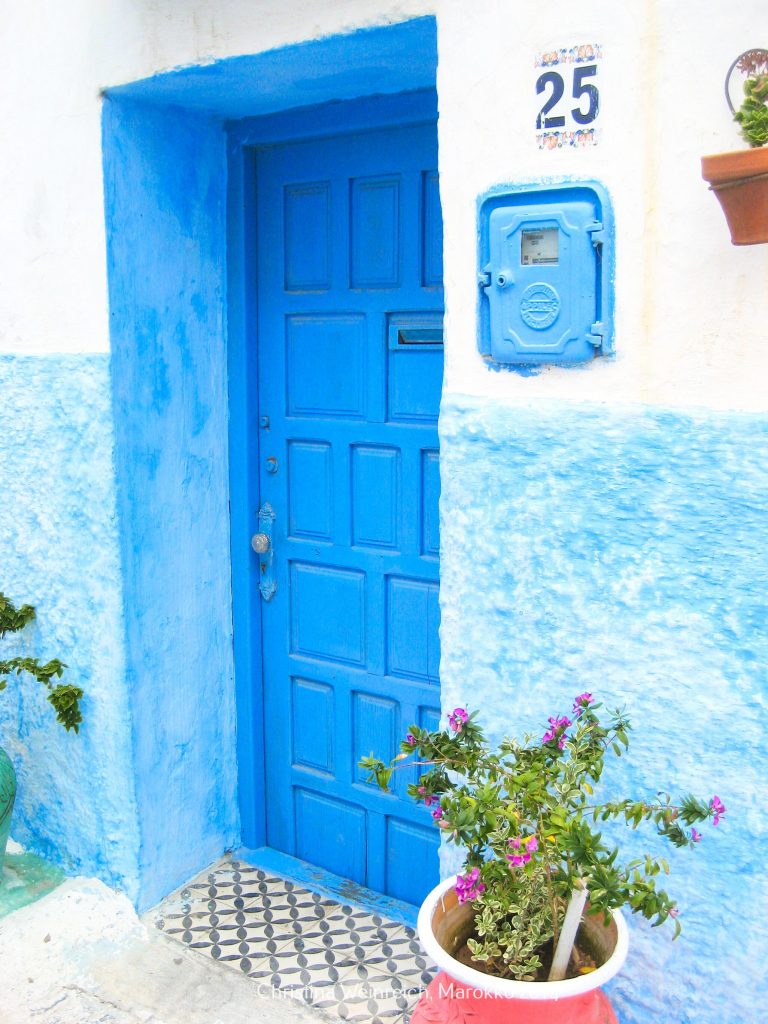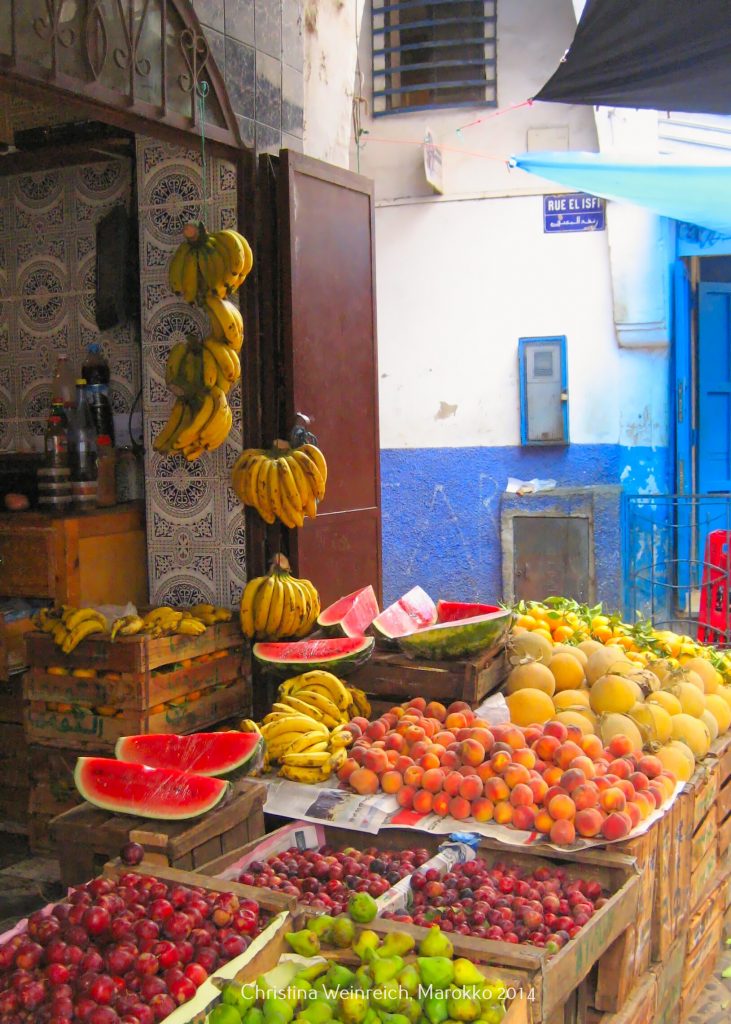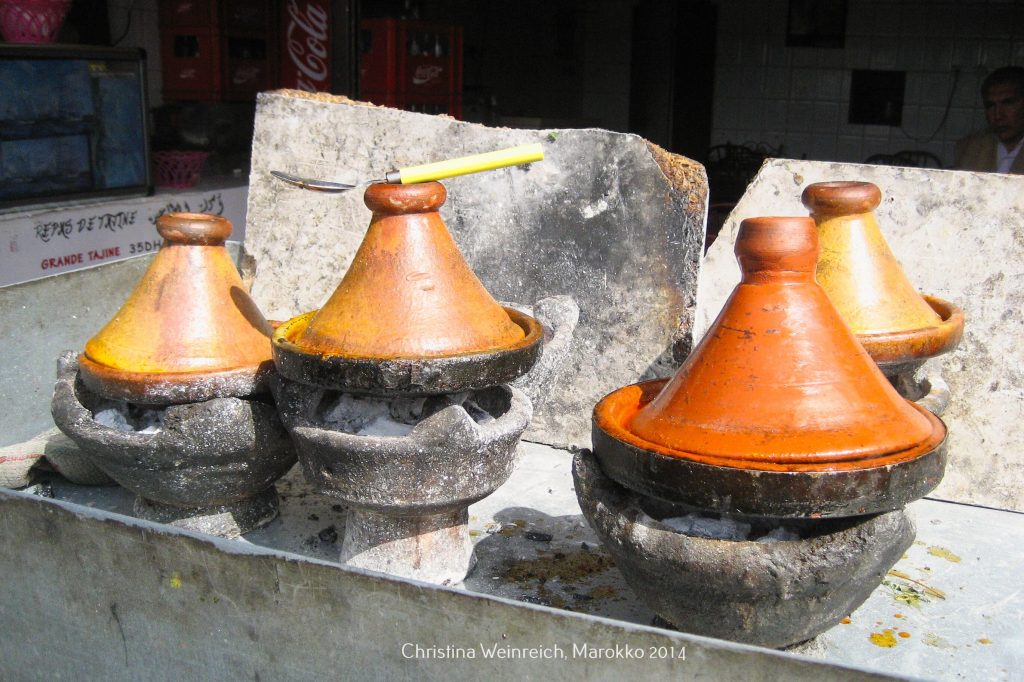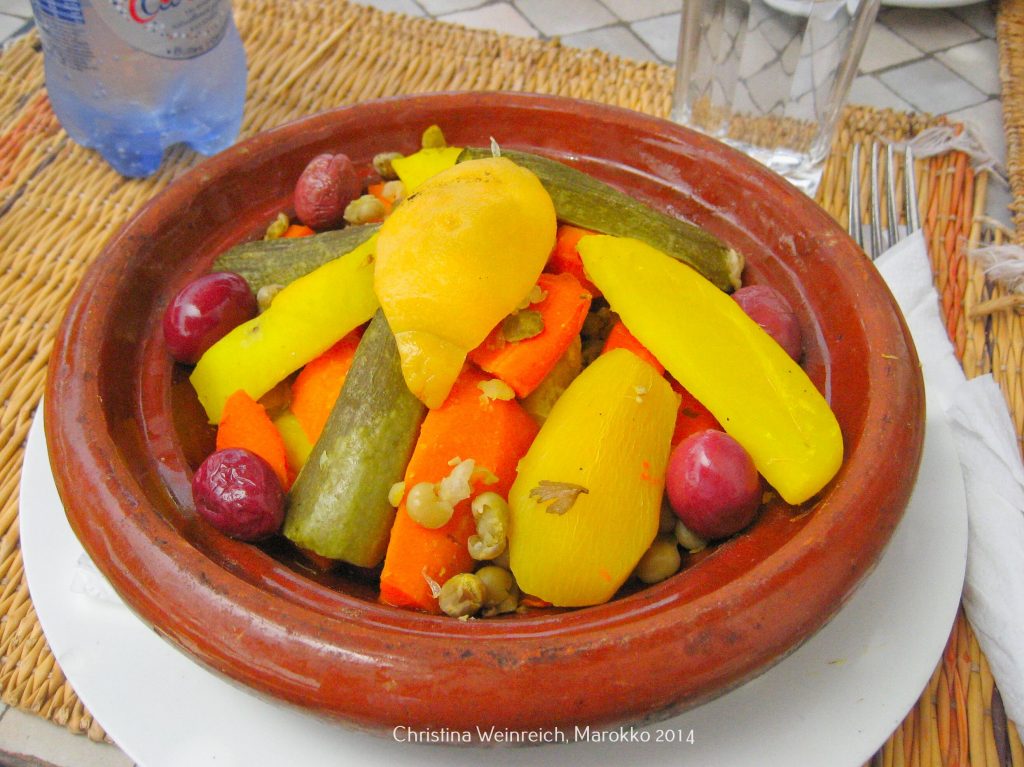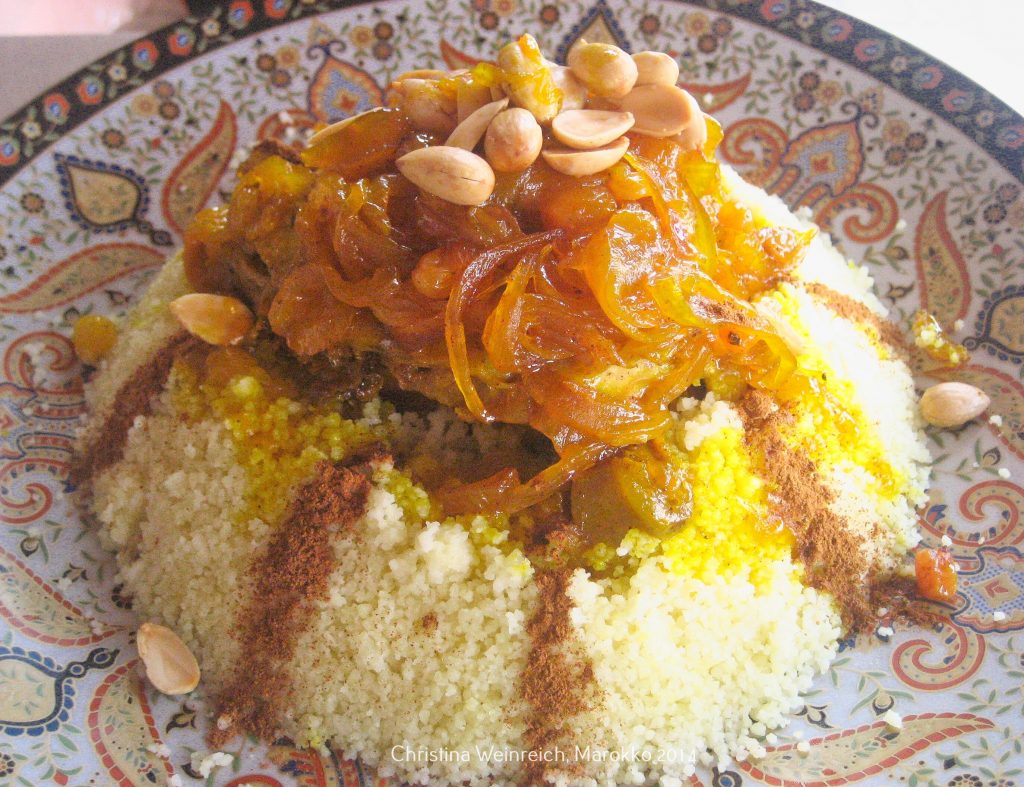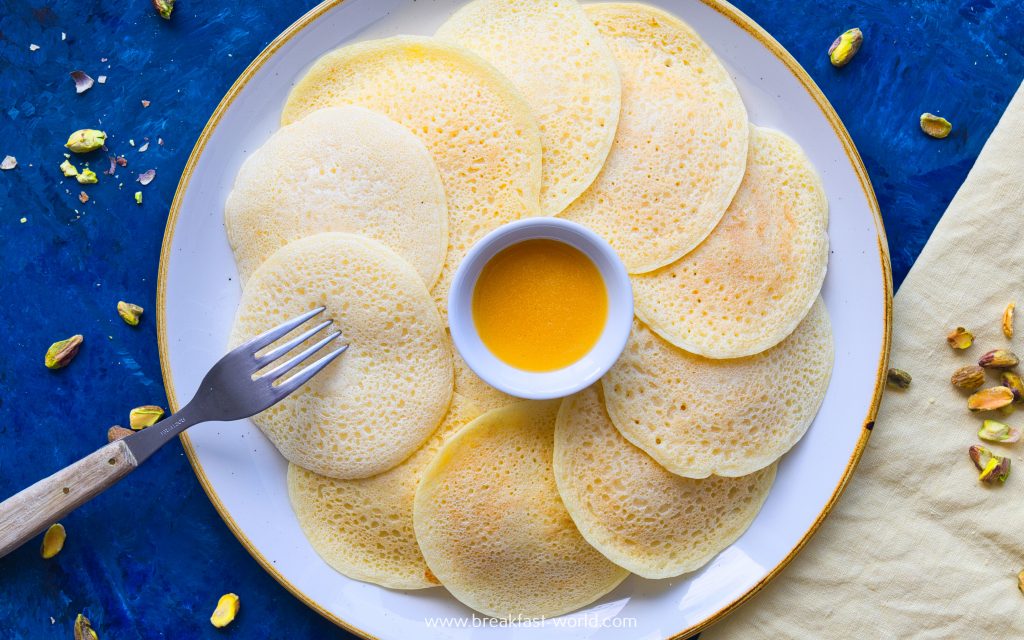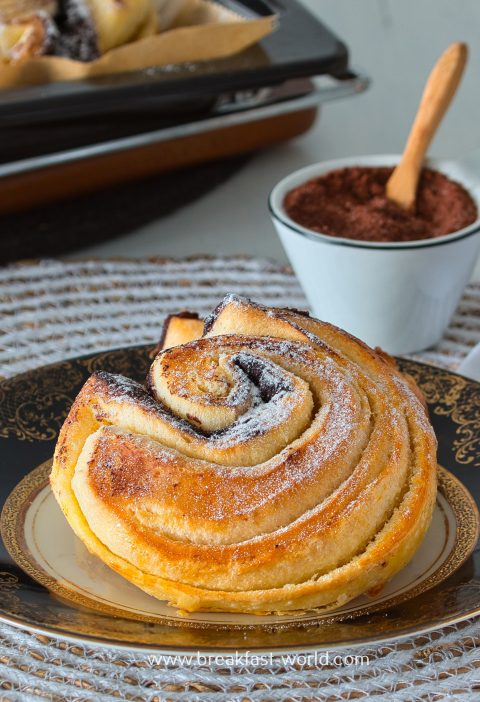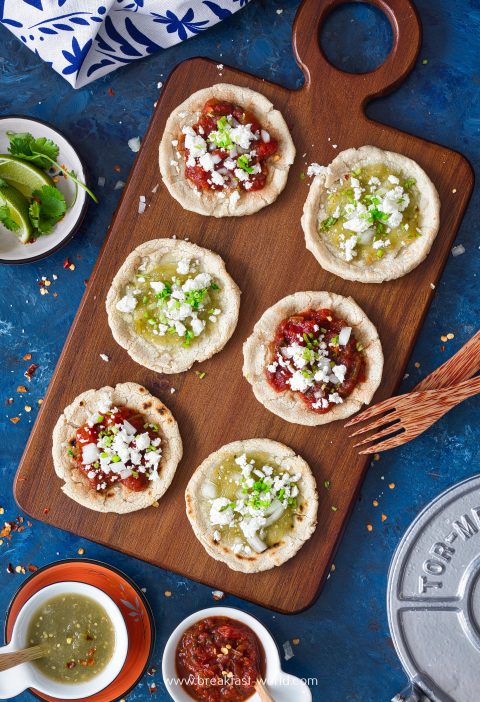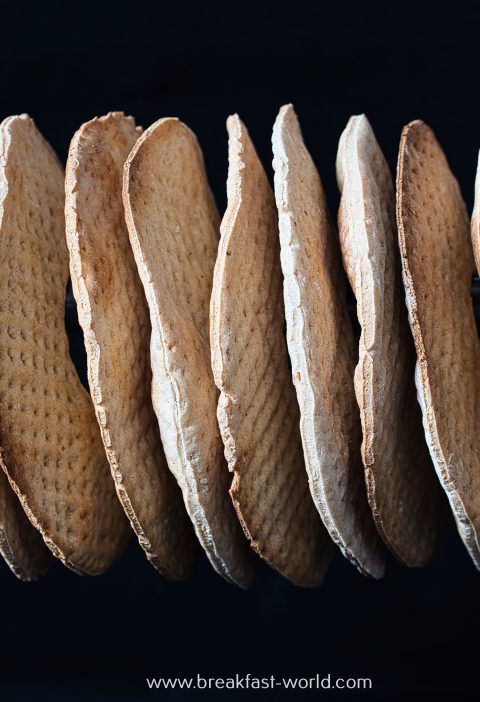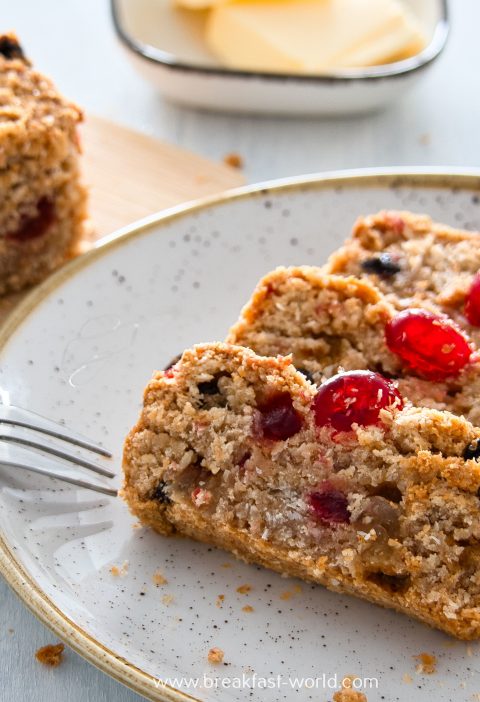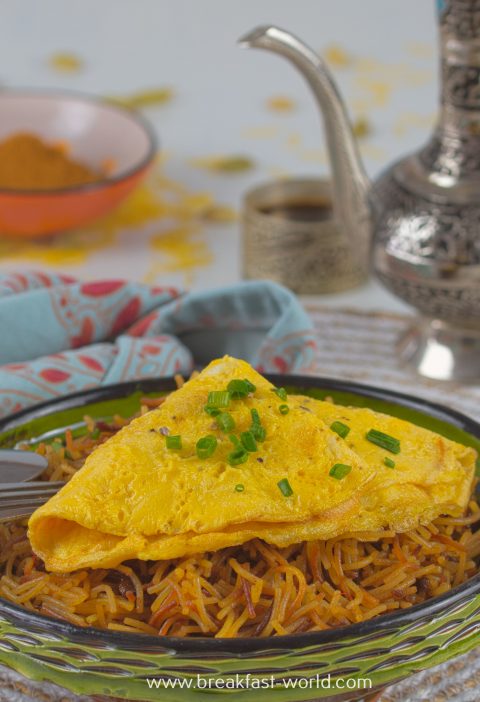Baghrir are fluffy pancakes made from yeast dough with many small holes on the surface. I regularly got them for breakfast during my trip to Morocco. They taste very good, especially with melted butter and honey.
Regarding culinary delights Morocco has a lot more to offer and not only for breakfast!!!
Jump to Recipe
Moroccan food is as colorful and diverse as the country itself. Moroccan cuisine has French, Spanish and Arabic-Islamic influences. It offers numerous culinary highlights.
At the markets you will not only find plenty of sun-ripened fruit and vegetables,
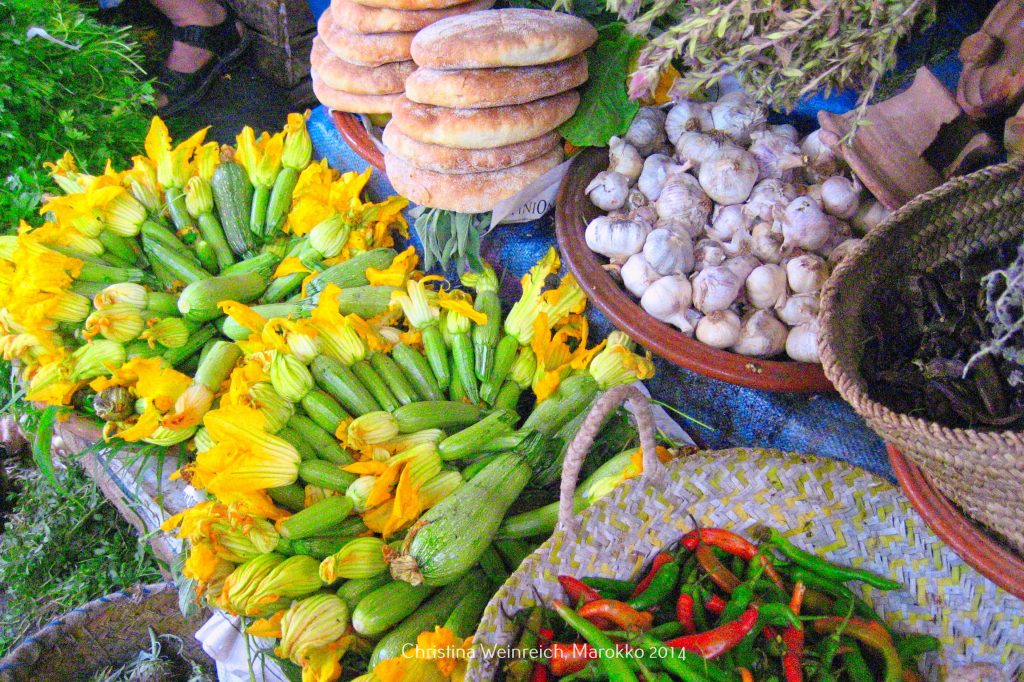
but also many spices that give the food its special aroma and intense taste.

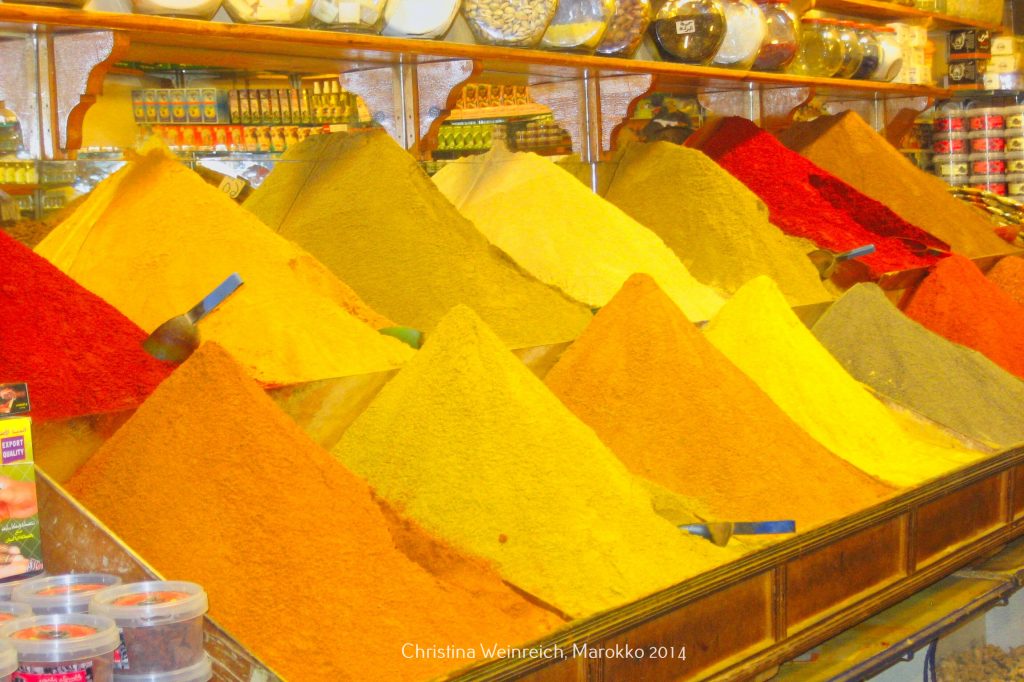
Probably the most well-known spice from Morocco is Ras-el-Hanout. This is a mixture of spices, the exact composition of which varies. Cumin, coriander, turmeric, ginger, cardamom and nutmeg are commonly used. A variety of other spices are also common, e.g. chili, cinnamon, cloves and pepper.
Olives and salted lemons in brine also play an important role in Moroccan cuisine. They traditionally flavor salads, couscous and tagine dishes.
Typical Moroccan food
The national dish in Morocco is Tajine (ṭāǧin), a kind of casserole.
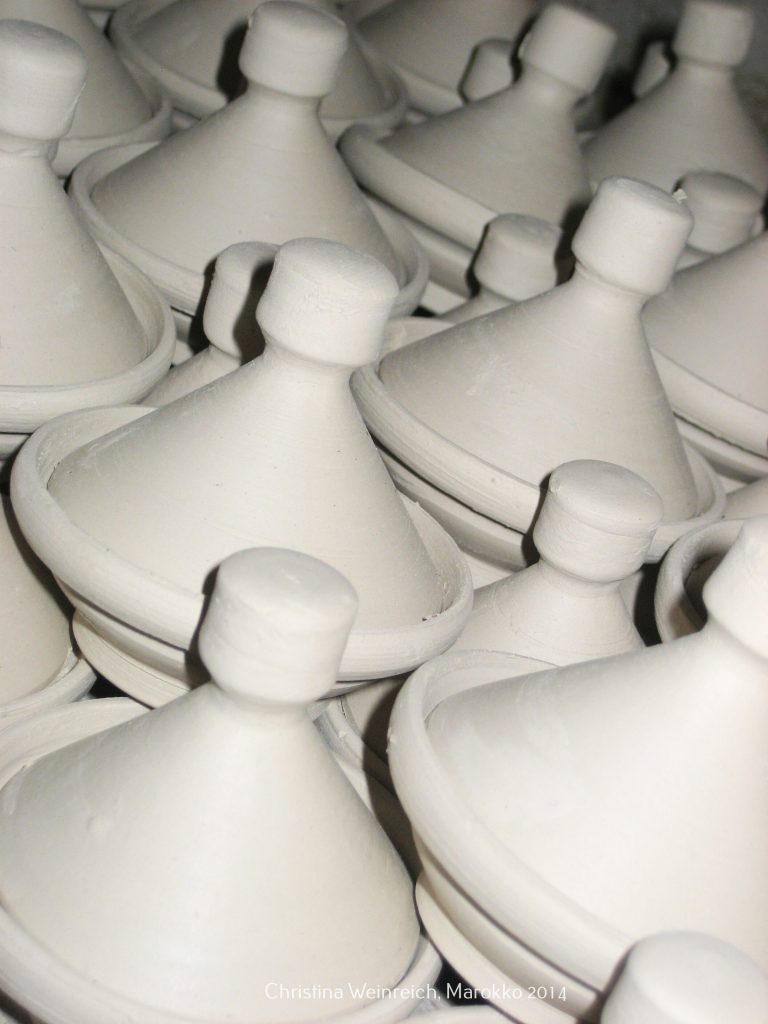

All ingredients are stewed in the clay pot on a fireplace for about 50 minutes.
There unlimited variations of Tajine: with fish, mutton and beef, chicken, sweet and sour with prunes or completely vegetarian with vegetables.
Another national dish is Couscous. Couscous originally comes from the Berber cuisine. It consists of wheat semolina, sometimes also of barley or millet. Couscous can be eaten in many different ways: on its own, together with meat or vegetables, as a salad or filling for fish, meat or vegetables. I really like the sweet version with raisins and steamed onions:
Typical Moroccan street food are meat skewers. Kebab is a grilled skewer of seasoned lamb or beef. Kefta consists of grilled minced meat. The skewers are served with fresh salad, a delicious dip and bread, chips or rice.
In the coastal areas there is a wide range of fish Very popular are grilled sardines with onions and fresh coriander.
For dessert the patisseries offer delicious tartlets, puff pastry dumplings (briouat), honey biscuits (chebakia) or crispy baked pastry sheets with a mixture of ground almonds, sugar or cinnamon (pastilla). Rose water often gives desserts a floral aroma.
Breakfast in Morocco
The breakfast (Iftar) is usually rich. You will get bread, yoghurt, egg dishes, cheese, butter, olives, tomatoes and fresh fruit such as oranges, dates, figs, grapes and pomegranates.
If you prefer something hearty, you should try a breakfast soup, e.g. Harira, a traditional soup made from meat, tomatoes, chickpeas, lentils and spices or Bissara, a soup made from fava beans or peas with cumin and olive oil.
The various components are appetizingly arranged in numerous small bowls.
Of course, you already drink for breakfast the well-known Moroccan mint tea, naturally with a lot of sugar. But also coffee (milk coffee, espresso or flavored with spices such as cardamom, cloves, ras el hanout) and freshly squeezed orange juice are regularly found on the table.
I was particularly impressed by the selection of fresh bread (Khobz).
Moroccan bread
Fresh bread is an important part of the Moroccan breakfast. Traditionally bread is also used in Morocco as a substitute for a fork or spoon.
For breakfast it is usually eaten with butter and honey or Amlou, a sweet paste made from ground almonds, honey and argan oil.
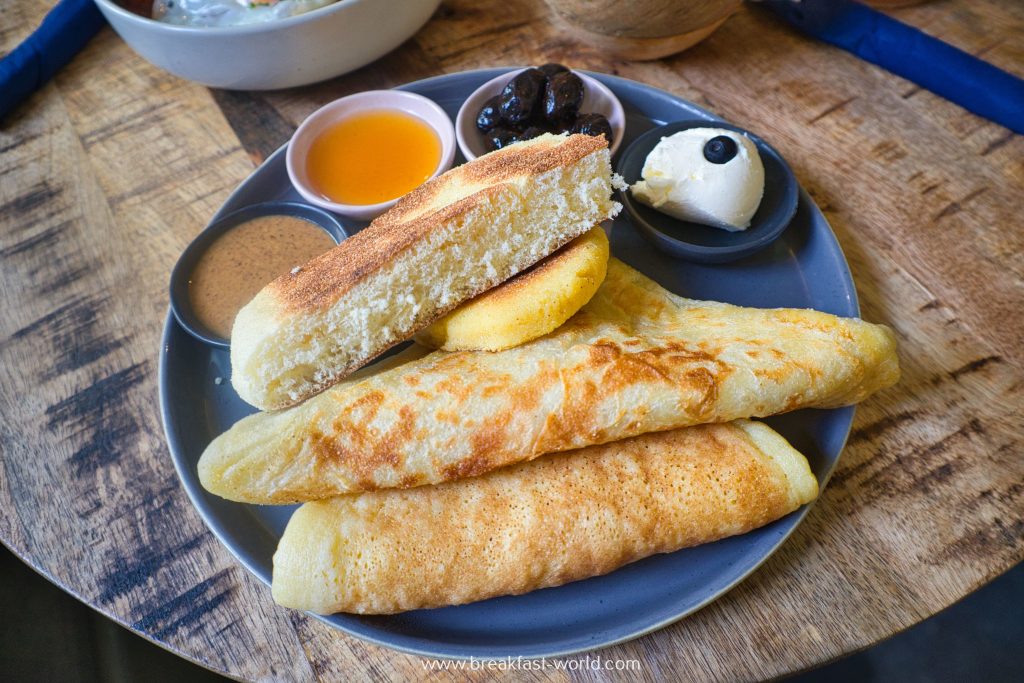
If you prefer it more savory, you can take olive oil, paprika, tomatoes and of course Zaalouk, a dip made from grilled aubergines, tomatoes, garlic and spices.
Due to the French influence, croissants and baguettes are widespread in Morocco.
Typical Moroccan breads very often also contain semolina. Aniseed or (black) cumin provide additional taste.
The best known are the following varieties:
Batbout is a pan bread that is made of flour and semolina . During baking, it puffs up with air. Therefore, like pita, it can be filled very well (e.g. with tuna, minced meat or chicken).
Meloui is also a pan bread that is made of flour, semolina and yeast . The dough is folded with a special technique. At the end the bread is round and looks like a curled up snail. Since the dough is repeatedly drizzled with melted butter while folding, Meloui are relatively rich in content, but taste all the more delicious!!!
Msemen are pan-fried square flaky flatbreads made from flour, semolina and water. Like Meloui, they consist of several thin layers that are drizzled with melted butter.
Harcha are pan-baked flatbreads made from semolina. The special thing about this bread is that it is made entirely with semolina instead of flour. Harcha is traditionally served with honey or jam. But it also tastes very good with olive oil, cream cheese and vegetable sticks.
My breakfast favorite is Baghrir!
Baghrir
Baghrir are small fluffy pancakes made from yeast dough prepared with semolina and flour. Characteristic of Baghrir is its surface with the many small holes. These arise on the surface of the pancakes during frying and give Baghrir its interesting texture.
Therefore, they are also known under the name "pancakes with 1001 holes".
The many holes have the advantage that they can absorb the topping particularly well.
Baghrir taste especially good with syrup made from melted butter and honey.
But they also taste good savory, e.g. with cheese, olives or tomatoes.
Baking baghrir is easy. It is important that the dough is not too thick. Otherwise no bubbles will arise. In this case, you should add a little water.
In addition, baghrir are baked only on one side. They are not turned!
Enjoy baking and Bon appétit!
PS If you are staying in Frankfurt am Main or Offenbach and would like to have a Moroccan breakfast I highly recommend Barrio!
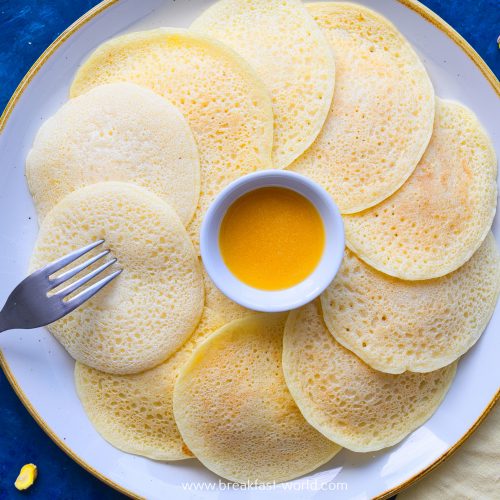
Baghrir
Ingredients
For the dough:
- 1 package dry yeast
- 1 tsp. sugar
- 1 pinch salt
- 4 tbsp. flour
- 375 g semolina
- 2 tsp. baking powder
- 1 l water lukewarm
For serving:
- butter
- honey
- chopped pistachios
Instructions
- Mix semolina, flour, baking powder, dry yeast, salt and sugar with water in a blender about three minutes to form a thin batter.
- Cover the dough and let it rise at a warm place for 15 minutes.
- Mix the batter well again with the blender before baking.
- Heat a coated pan without fat.
- Add a soup ladle portion of the batter to the pan and let it bake over medium-high heat from one side .
- The pancakes are ready as soon as a lot of small bubbles arised and the batter is dry on the surface. The underneath is slightly browned.
- Serve warm with butter, honey and chopped pistachios.
Notes
If you like this post, I look forward to a rating (star bar) or a nice comment!
Thanks a lot!
Perhaps you would also like to subscribe to my page. If so you will be regularly informed about new posts.

